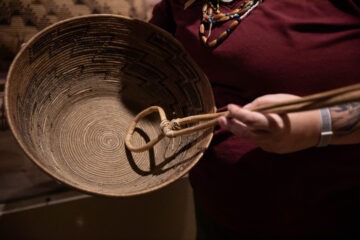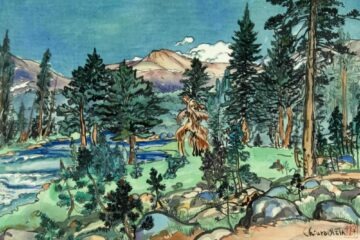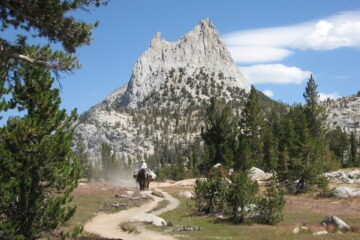After the hustle and bustle of a summer season in Yosemite, a sense of calm descends across the park in winter. Snowfalls transform the park into a wonderland blanketed in snow. Most visitors only come to the park during the summer high season, which makes Yosemite in winter one of the best kept secrets – until now. This guide provides the practical advice of how to best prepare for a winter visit. And as always, please recreate responsibly and enjoy your national park!
tl/dr
- Park Open All Year: How weather impacts access to Yosemite in winter
- Yosemite Winter Club: Join in the winter fun
- Winter Travel: Let’s talk about tire chains
- Winter Reservations: Peak hours & Horsetail Falls
Park is open year round: how weather impacts access
Yosemite National Park is open year round including on all holidays such as Thanksgiving, New Year’s Eve, and New Year’s Day. Keep in mind that holiday weeks can be busy in the park. But in between those rushes, the park tends to be a bit quieter. For example, December in Yosemite can be quite quiet, until the end of year holidays.
When planning a visit to Yosemite in winter (or any time of year) it is always a good idea to check the current conditions page of Yosemite National Park’s official website for park updates.
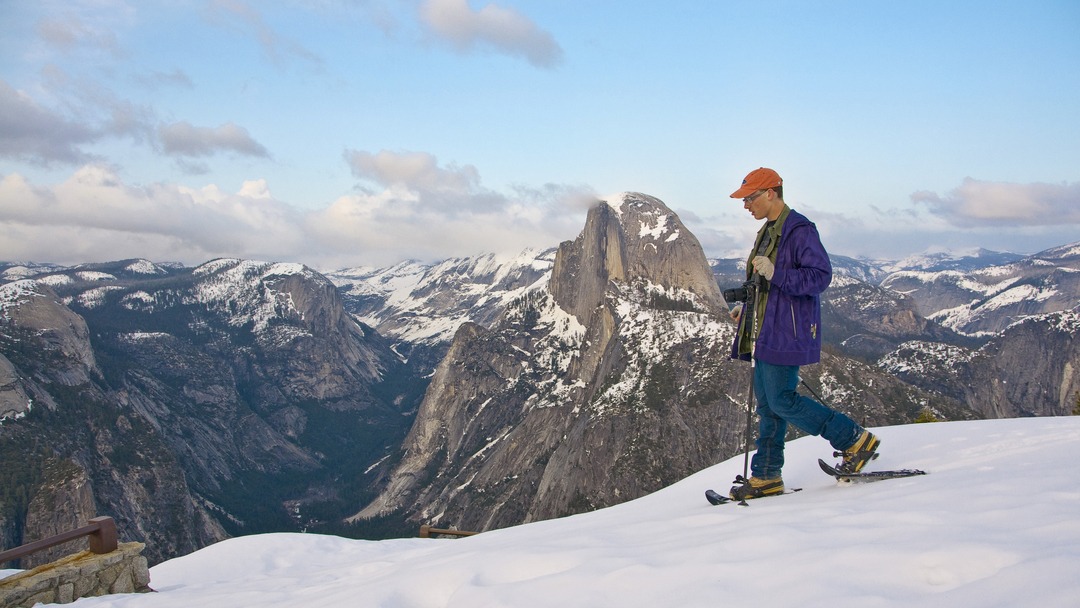
Snowshoeing is a favorite winter activity in Yosemite. Look below in this blog to learn more. © Yosemite Conservancy/Nancy Robbins
Moving from top to bottom, the park has assembled critical information:
- Emergency alerts.
- Road status.
- Seasonal information.
- Campground and lodging links.
- Trail and wilderness conditions.
- And more!
Travel after winter weather can involve rerouting around closures or putting chains on your tires (see below for more info). Yosemite National Park’s roads crew work to ensure that roads are safe for the public.
The biggest change in access over the winter months occurs when snow closes the high altitude roads — Tioga Road and Glacier Point Road. For more information on those closures check out our FAQ: Tioga Road in Winter. Certain weather events can impact other park roads which is why checking the park’s current conditions page is an important trip planning resource.
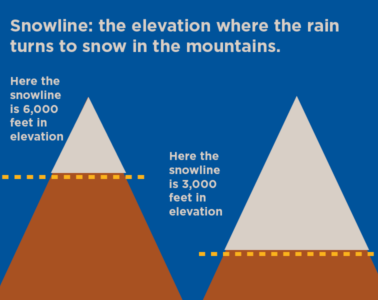
Understanding Yosemite Valley and park-wide weather forecasts is important when making plans to visit in winter. When winter weather is predicted, especially with an advisory or warning, the term snowline is often used, which is the predicted elevation of snow fall vs rain fall.
Example: If a storm’s snowline is predicted at 4,000 feet, then Yosemite Valley (at 4,000 feet) will receive snow, while elevations lower than 4,000 feet would expect rain. If the predicted snowline is 6,000 feet, then Yosemite Valley’s walls would be topped with snow and the Valley floor would likely receive rain.
Yosemite Winter Club: Join in the winter fun!
Curious what there will be to do once you get to Yosemite in winter? The short answer is lots.
A picture is worth…?
- Catch sunrise at Tunnel View! Have you always dreamed of seeing sunrise at Tunnel View, but couldn’t make it there by 5am in June? During the winter months, later sunrises mean you can “sleep in” and still make it to the vista to see those rays of light cresting over the High Sierra.
- Throughout Yosemite Valley there are various pullouts along meadows that offer stunning vistas of our favorite landmarks: El Capitan, Yosemite Falls, Half Dome, and Sentinel Rock. When stopping to take in the view or snap a few photos, please make sure that you park your vehicle completely off the roadways for everyone’s safety.
Hiking or snowshoeing!
- Many of the park’s trails remain open throughout the year, and the Conservancy’s Outdoor Adventures team offers several winter programs every year. In the winter, many Yosemite giant sequoia groves — Mariposa, Tuolumne, and Merced — are typically open and blanketed under a fresh coat of snow. Here, you’ll find great hikes/snowshoeing opportunities:
- Tuolumne Grove. This moderate, 2.5-mile round trip hike follows an old logging road down to a small loop. While it’ll likely take you 1 to 2 hours, keep in mind that there is a 500-foot elevation gain on the hike back out.
- Mariposa Grove. In winter, Mariposa Grove Road closes to car traffic, offering a variety of more strenuous activity options. Visitors can hike, snowshoe, or ski the 2 miles up to the grove and several miles of trails within the grove.
- For adventures down in the valley we love …
- Mirror Lake (2–5 miles), Cook’s Meadow (1 mile), and Lower Yosemite Fall (1 mile) hikes/snowshoe routes are casual to moderate trails that each offer beautiful views of Yosemite’s icons.
- Four Mile Trail (partial closure). In the winter, the Four Mile Trail is partially open, allowing visitors to trek the lower three miles up to the winter gate below Union Point. Although Glacier Point and Union Point would not be accessible, the partially open trail still offers great views of Yosemite Valley. After major snowfalls, the entire trail may close.

Left: A group hike in the snow at Yosemite National Park. © Yosemite Conservancy/Nancy Robbins. Right: A visitor learns about Yosemite’s trees in the newly redesigned Yosemite Exploration Center. © Jenn Emerling
Winter Learning Opportunities
- The Yosemite Museum is open year round. Staffed by members of park’s Indian Cultural Program, the permanent museum exhibit features basketry and artifacts from the seven associated tribes of Yosemite.
- The newly redesigned Yosemite Exploration Center is the perfect, family friendly space to learn about Yosemite’s history, flora and fauna, and people through interactive displays and exhibits.
- The Ansel Adams Gallery is just a few doors down from the Yosemite Museum. There is a rotating gallery as well as a selection of Adams’s classic prints on view.
Badger Pass Ski Area
- When it snows, everyone heads to Badger Pass Ski Area in Yosemite in winter. Badger Pass has a little something for everyone. Downhill skiing and snowboarding, cross country routes, and snow tubing. Offers change depending on snow and staffing levels. Best to check the website before making any definite plans.
Ranger Programs
- Programs are available year round. The easiest place to check in the current edition of the Yosemite Guide or you can check Yosemite National Park’s online calendar of events.
Looking for more suggestions? Stop by a ranger information station in Yosemite Valley for personalized recommendations for your visit. No one knows the trails like a Yosemite park ranger.
Winter Travel: Let’s talk about Tire Chains
- What? Tire chains are devices that improve your vehicle’s traction in snowy/icy conditions. During certain winter conditions, visitors are required by federal and state laws to have them in your vehicle or on its tires. Tire chains come is a variety of sizes and styles; before venturing out, make sure yours fit the tires on your car.
- Who? Under certain conditions, CalTrans and Yosemite National Park require EVERYONE to use chains. This includes folks in rental cars. Thus, in winter or other times when snowy/icy conditions are possible, you’ll need tire chains readily available in your car.
- Where? Chains can be required on any roadway, so it’s important to have the chains in your car ready to go.
- When? Chain control is typically in effect from November–March, but could occur as early as September and as late as May.
- Why? The use of tire chains helps reduce the number of accidents that occur during winter weather events.
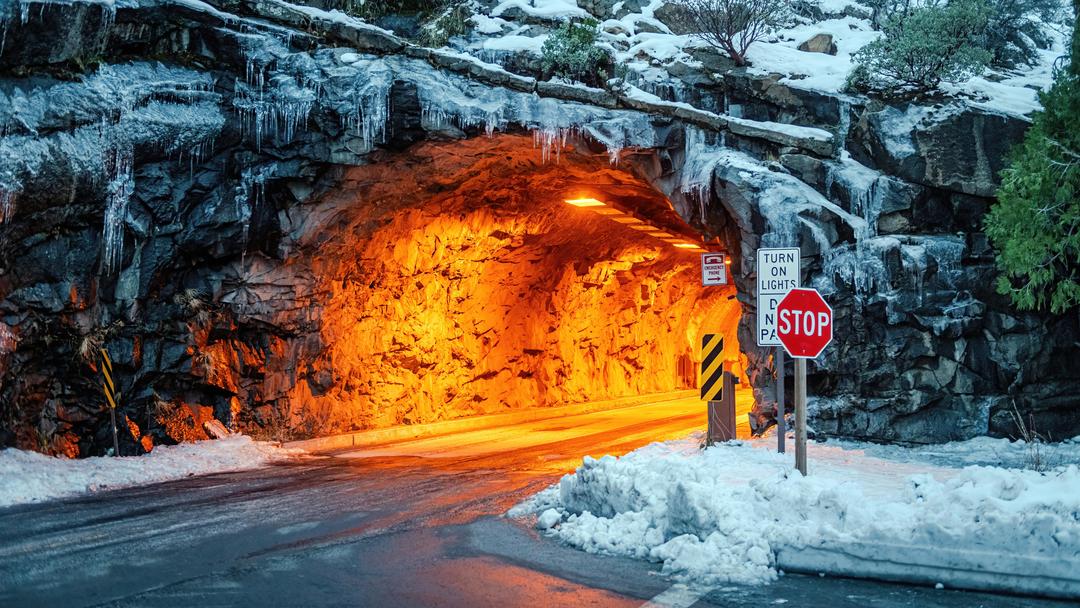
In Yosemite National Park, all cars are required to have tire chains in snowy/icy conditions. Photo of the Wawona Tunnel at Tunnel View. © Yiming Chen
Pro tip: Don’t want to worry about tire chains? The YARTS bus is a safe alternative that can be ridden into the park from various locations along the 140 corridor.
Winter Reservations in Yosemite
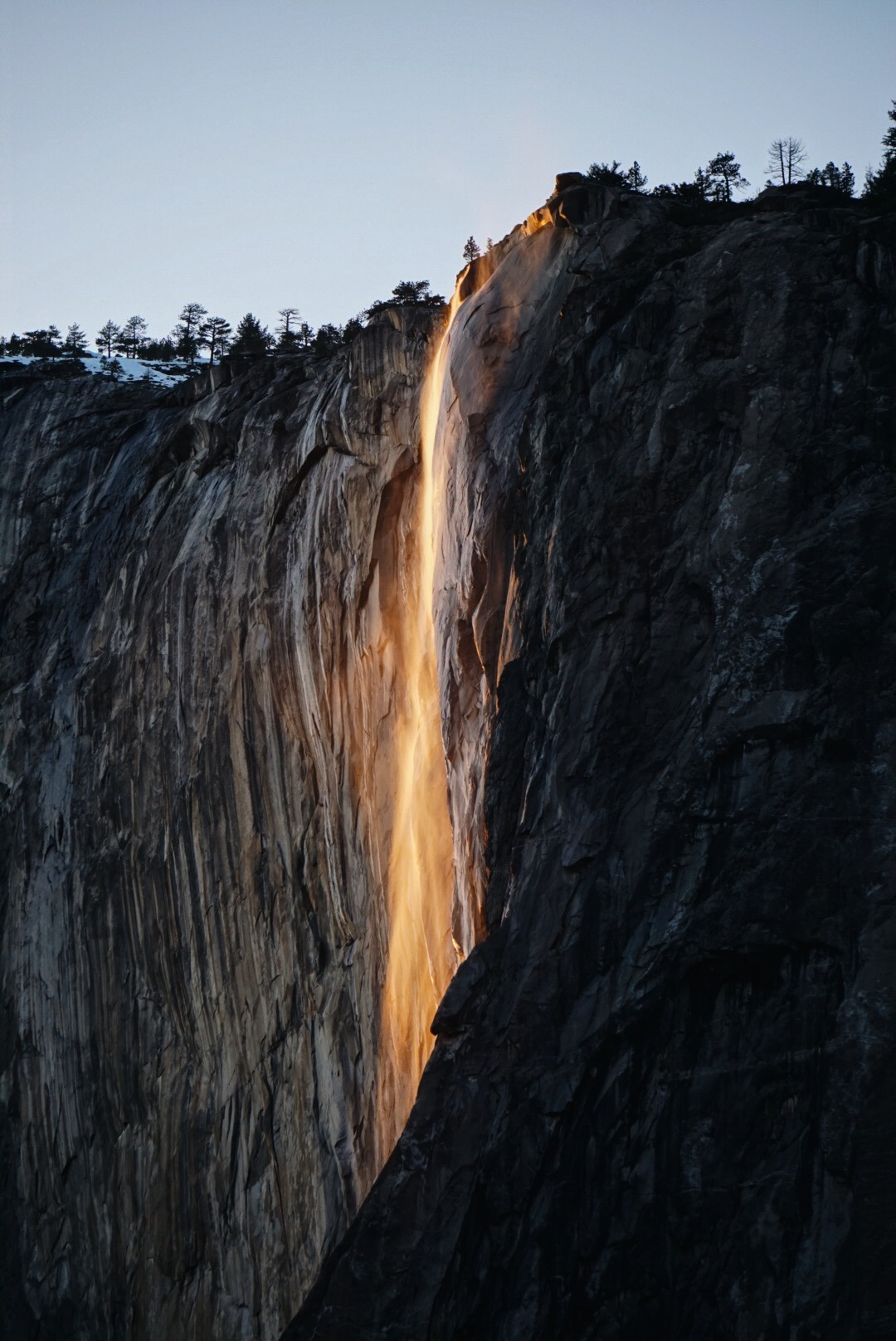
Horsetail Fall comes to life with light in the natural phenomenon known as ‘Firefall.’
As Yosemite moves into winter, the park also moves out of its busiest season. The National Park Service often utilizes a reservation system during the busy summer months (approximately April through October) to manage visitation. For the most up-to-date information regarding reservation requirements, visit the park’s website.
Horsetail Fall Reservations
Horsetail Fall is an ephemeral waterfall that in late winter appears to glow as if on fire when the light hits it and conditions are right for a few short weeks in February. Due to increased popularity of the event/natural phenomenon in recent years, the National Park Service has instated various restrictions during mid to late February each year. The details on plans for managing visitor access will be provided the park service prior to the event.

